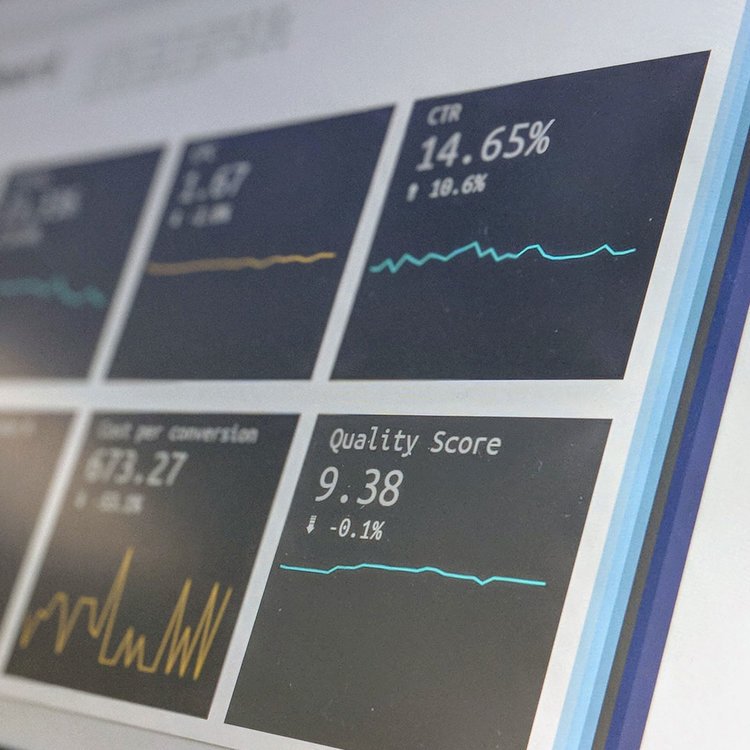Swimming in Social Media Marketing Uncertainty? Here’s Your Lifeline
Many brands are still reckoning with how to best use social media in the context of a greater marketing strategy. This uncertainty is sparked by the fact that the exact return on investment (ROI) is often unclear, as is the amount of the investment itself.
It’s no secret that the influence of social media marketing, specifically on consumerism, has been skyrocketing. GlobalWebIndex shows that between 2015 and 2017, the percent of internet users shopping on platforms like Facebook and Instagram increased from 23 to 29 percent. Essentially, this means that about one in three people are scrolling their newsfeeds to shop.
However, understanding why people frequently use social media isn’t alleviating the uncertainty of this marketing strategy. To make matters worse, most business leaders are bombarded with different advice about how it’s more advantageous to share a blog than vlog, image than gif, question than survey.
Furthermore, there is both a time and monetary cost involved in curating a strong digital presence. Because the cost of digital marketing varies so widely, many business owners are left wondering just how deep they need to dip into their bottom line to make a splash on social media. In an effort to shed some light on these marketing conundrums, we’re taking a deep dive into social media strategy, cost considerations, and our skewed relationship with managing data.
Pools of Thought
The cost of cultivating an immersive digital presence for small businesses is drastically different than it is for global brands, as the goals of the two are anchored in completely separate pools of thought. Small businesses are often looking for hard and fast conversions, while big brands see more value in soft and slow returns (like site traffic and brand recognition). This is not to say that large corporations aren’t after sales, but their marketing teams know the importance of staying on the tip of everyone’s tongues.
In fact, McKinsey reports that word of mouth is the primary factor behind 20 to 50 percent of all purchasing decisions. This statistic may leave discerning business folk to wonder how to increase word of mouth marketing (WOMM). One of the best approaches is to use social media—hence why huge brands are willing to pay Kylie Jenner a million dollars a post.
To be clear, context is critical when it comes to any social initiative. Small businesses aren’t usually as interested in influencers as they are in spreading the word on their own profiles—and contextually, this approach can work. However, there is something vital to learn from the mentality of corporate marketing.
In a world where people are communicating more than ever and through a whole new variety of channels, the opportunities for brands to find their way into people’s conversations are nearly endless. But, the biggest players in the industry know that merely having a good product doesn’t get people talking.
As Seth Godin, world renowned marketing guru and author of Purple Cow, so aptly put it:
“Sometimes, what you do is done as well as it can be done. It’s a service that people truly love, or a product they can’t live without. You’re doing everything right, but it’s not remarkable, at least not in the sense of ‘worth making a remark about.’"
Consumers expect quality, and unfortunately, doing the expected doesn’t get people engaged.
Think, for a moment, about how something goes viral: It has little to do with following a formula, choosing the right colors in a photo, or optimizing with a perfect set of meta tags. It’s about fulfilling a person’s needs in a way that also evokes an emotion. Because we’re social creatures, people want to share that feeling. It is in those utterances that WOMM is sparked.
The strategy to go viral—and even to get noticed at all—is about moving away from simply asking “what’s the topic of our content?” to “how can we make this content fulfilling?” Leaders in the digital media industry call this “Cultural Cartography.” When analyzing viral, frequently-shared, and engaging content, it seems the overarching purposes of creating it distills into six overarching categories, which include to:
Entertain (Make people laugh)
Humanize (Show relatable vulnerabilities)
Connect (Highlight relatable subjects)
Educate (Teach people something interesting)
Inspire (Show people hope)
Anger (Fire someone up)
When it comes to social media, there is no content for content’s sake, it’s always for people. Don’t post just to post. Have a conversation, establish a connection, and fulfill your audience’s wants and needs. That being said, it’s important to take a quick aside about that last characteristic of viral content: anger.
It’s well-documented that rage is like gasoline for engagement. In the case of going viral, a study published by the Journal of Marketing Research shows that anger-evoking content is most likely to be shared on social media. Knowing that, you need to decide what kind of brand you want to be.
If you need more of a reason to do the right thing, a 2018 Porter Novelli/Cone survey found that “purpose” is one of three top elements that compose a company's reputation. When it comes to examining the purpose of a company, Americans prioritize responsibility (86%), caringness (85%), advocacy (81%), eco-friendliness (79%), and generosity (73%). So while anger may spread like wildfire, it burns like jet fuel—meaning brands that fear-monger will be mere flashes in the proverbial pan.
Cost Considerations
For small businesses, paid social media budgets often range from $100 to $1,000, and for medium-sized businesses, $1,000 to $10,000. For the big dogs, you’re talking millions (if not billions). But more money isn’t necessarily indicative of more engaging or successful content. This reality is precisely why it’s essential that you consider more than just your monetary expense—you need think about what your time is worth and how much of it you’ll have to spend creating content worth sharing.
Time Equals Money
According to Buffer, to build an engaging campaign, social media managers have to spend about 12 hours per week planning, implementing, and measuring analytics. When it comes to a timesink, creating worthwhile, shareable content is like a black hole. Depending on the subject matter, research required, editing time, and optimization needed, you’ll need at least 12 hours (head down, hands on keys) to create a pristine piece.
What’s more, creating content, planning posts, implementing plans, and measuring data aren’t the only time-hogs to consider when it comes to social media. Businesses need to invest time in engaging with their followers. Social Media Today suggests brand marketers spend 35% of their time on social media engaging with customers.
Between content creation, posting, and reporting, a business should expect to spend at least 20 hours a week on their social media marketing campaigns if they’re doing it by themselves. Anything less is probably a warning sign that the content and posting strategy will not produce a successful result.
In-House Versus Outsourcing
If you want to keep your social media management in-house, either you or your employees will have to dedicate a significant amount of time to your accounts. So, you have three basic options: extend your own workday, divert your current team’s focus to social media, or hire a social media manager. If you and your employees’ are already drowning in work, keep yourself afloat and just hire an extra set of hands.
Should you choose to bring on a full-time employee to handle your accounts, consider recent findings from PayScale, which found that the average hourly rate for a social media manager is $15.43. This means that you need to ensure you social media efforts are worth over $32,000 annually just to cover your costs.
For smaller businesses that can’t quite justify creating a full-time position, a more affordable option for social media management is to outsource these efforts to an agency. If you fall into this camp, find an agency that has experience building out immersive branded content strategies to ensure you know exactly how, when, and what to post. By shifting this work out-of-house, you’ll save yourself hours a week as well as another name on your payroll.
The Organic Approach
Managing your own social media account can be free. While going organic does a number on your reach (thanks, Facebook), great content will still entice people to like, comment, and share—which, according to Facebook, are significant signals to prioritize your posts in news feeds. A major factor in their algorithm also includes the “dark social” aspect (social sharing that is difficult to track, such as email, text messages, and private chats) of Facebook Messenger as well.
As you already know, one of the most difficult challenges of an organic reach approach may be finding the time to consistently create, post, and share content in a way that builds and maintains a meaningful relationship with your followers. If you and your team decide to forge ahead with in-house social management, be sure that you’re:
Appropriately engaging with your audience
Scheduling your posts
Encouraging user-generated content
Engage With Consumers
Customers don’t just hope for engagement from the brands they are following, they expect it. In fact, Altitude found that 47% of people expect a response on social media within an hour, and 84% won’t wait longer than 24 hours. After reaching out to a business, a customer may leave a negative review, abort a purchase, or switch brands altogether if their needs aren’t promptly addressed.
In order to respond to messages quickly, your business should assign a point person who is solely responsible for checking your social media accounts for messages and comments. To ease some of the stress of always needing to “be on,” you can schedule posts in advance on various platforms.
Scheduling Platforms
Some organizations may be hesitant to use a scheduling platform, such as Hootsuite, as there is a misconception that this technology limits the size of your audience. However, recent research by Buffer found that using a third-party tool has no effect on your brand’s reach. If you’re still concerned, Facebook and Twitter allow you to schedule posts.
User-Generated Content
User-generated content (UGC), a form of earned media, is often viewed as the most reliable source of information, as it’s often a business’s actual customers who create it. As a matter of fact, according to the Curalate Consumer Survey, 60% of social media users between the ages of 18 and 24 said that they would be more likely to purchase an item if they saw more images of current customers using the product. Other benefits of user-generated content include:
Boosting social media metrics
Building a wide brand awareness
Establishing credibility
Finding new and unique ideas
Reaching new audiences
Supporting lead generation
One of the easiest ways to increase UGC is to create a hashtag (#) for your brand. When a consumer purchases your product, they can use the repurposed pound sign to show it off. Consider a catchy play on words or alliteration to catch people’s eyes. By creating a hashtag, you’re effectively creating a sorting method for brand-centric content that other potential consumers can connect with.
As a sidebar, Social Media Today found that the optimal amount of hashtags on an Instagram post is 11. Meanwhile, a Facebook post should contain no more than six, and on Twitter, you’re safe with two.
To better engage consumers, your business could also consider consider a photo or video contest. Ask your customers to use your product in a creative way and then post a picture for a chance to win a prize. These contests create an incentive for your followers to promote your brand to all of their friends and family on social media. As a matter of fact, Hubspot reported that the average contest acquires 34% more new fans by asking followers to tag their friends for a chance to win. Moreover, contests may also ignite some new business ideas that stem from consumers’ original content.
Although contests are arguably one of the most common methods of free marketing, you should be aware of each platform’s restrictions. For instance, Facebook will shut down or suspend business pages that don’t follow their guidelines.
After seeing user-generated content, be sure to respond to and engage with everyone who puts forth a submission and uses your hashtag. This creates meaningful conversations, builds trust between the consumer and your brand, and encourages future engagement.
The Paid Approach
According to Influencer Marketing Hub, marketing on Facebook only costs about 25 cents to reach 1,000 people. Meanwhile, it would cost about $32 in a traditional newspaper to reach the same sized audience. With numbers like that, it's not surprising that businesses are using their budgets to market on social media.
Whether you choose to boost a post or pay for ads, you need to be prepared to tackle everything from the aforementioned organic approach in addition to managing your campaigns via the platform's dashboard for paid ads. While it’s more to oversee, sites likes Facebook and Twitter have robust sets of targeting options as well as a stellar array of reporting tools.
Facebook (And Instagram) Ads Manager
Similar to Google Ads (previously Google Adwords), Facebook offers an “auction” for users to bid on how much they will spend on an advertisement or sponsored post. The Ads Manager allows you to target your customer with precision and find the audience that will respond positively to your products, services, and message. Some targeting metrics includes:
Language
Personal email list
Relationship status
School
Workplace
Age
College major
Education level
Gender
Geography
Interests
A perk of Facebook’s auction process is that you set your budget. Depending on your business goals, your minimum budget can be as small as $1 a day, although campaigns for likes, video views, or post engagement must be at least $5. When it comes to boosting your brand, Moz found that this inexpensive marketing strategy is only about 1% of the cost of traditional TV advertisements.
Twitter also has their own form of bid auctions. Depending upon the campaign objective you choose, the costs can vary depending on:
How engaging the ad is
How many other advertisers are also targeting that particular audience
How much you bid
The size of the audience you’ve targeted
As with Google Ads, the quality of your content on Twitter’s version of bid auctions—be it the words in the ads or the relevance of your message—effects how much the campaign will cost you. The higher the quality, the lower the cost per click (or impression, conversion, etc.).
Monitoring Results
Whether you have the time to do so or have designated a social-media manager to monitor results, you should be tracking the insights available on each post. However, keeping your work hours in mind, this task can easily become a full-time job—and for many companies, it is. The availability of data and metrics to analyze is nearly endless. For instance, depending on the social media platform you’re using, some of the information available includes:
Average completion percent
Engagement
Favorites
Followers
Impressions
Mentions
Net likes
Organic and paid post likes
Page likes
Post reach
Profile visits
Replies
Retweets
Saves
Total views
Unlikes
Reevaluating Data
If you’re thinking about taking a deep dive into a social strategy, you need to view for its true value. No, this doesn’t refer to how much a click is worth. It means using data to define who your audience is and what makes them tick.
While it may sound counter-intuitive (especially coming from a company that works with heaps of data every day), businesses looking to make a splash on social need to spend less time worrying about how they’ll measure WOMunits, and more on crafting the actual message they want people to share.
Still Feel Like You’re Sinking?
Exploring all the considerations for social media can lead you into some of the deepest waters of digital marketing. If you’re starting to get that sinking feeling from calculating the time to create a content strategy and adding up the money to pay a full-time social media marketer, know that there’s a simple way to swim back to the surface.
If you and your team need a lifeline, Ethos Copywriting is here help. We offer comprehensive content strategy, social media consulting, and digital media creation. If you’re interested in learning more about how we can help you elevate your marketing presence, contact Ethos Copywriting today.
If you’re simply here for a good read, please let us know what you thought about the piece by commenting, sharing it with your network, or clicking the like button below.






